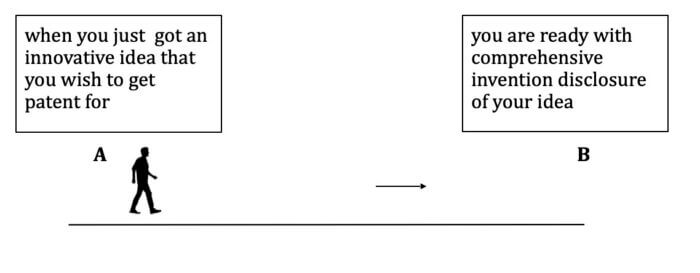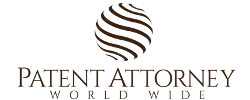Going from idea to complete invention disclosure
“Going from idea to complete invention disclosure is a crucial process for obtaining a patent. Start by clarifying your invention and documenting its details. Conduct a preliminary search to identify prior art and evaluate novelty. Create a comprehensive invention disclosure by answering key questions. A well-prepared invention disclosure saves time, effort, and costs, setting clear expectations with a patent agent or attorney.”
Table of Contents
- Going from idea to complete invention disclosure
- You need to get clarity on your invention
- How to do a preliminary search for your idea (invention)?
- How to perform a search for prior arts
- How to review the results you got from this preliminary search?
- How to create complete invention disclosure
- Mistakes to avoid in the idea to invention disclosure phase
let’s consider the word “idea” here before we proceed. and there are two ways to look at it. if you refer to patent law in India, the mere ideas are not patentable subject matter. so, if you got just one line idea about something it may not be patentable !!! Having said that, there is another angle to look at it:
“Everything begins with an idea !!!” Even the patents that are granted now also began as an idea about an invention at a certain point.
to understand “How to identify innovative ideas with the potential to win patent” we need to refer to an important article about What type of inventions can be patented in India. once we are sure that our idea does not fall under non-patentable inventions in India, then we can proceed to the next step.
The outcome from this article: “The steps here are designed to take your innovative ideas from inception level to a comprehensive invention disclosure (that is ready to discuss with a patent agent or attorney). ”
As an inventor, This is the most important step that you would be taking that will decide the future and fate of your invention which would be ultimately going to get the patent protection.” This guideline would help you in moving from point A to point B

You need to get clarity on your invention
The way we get more clarity about our innovative ideas is when we start writing down things on paper or in a word processor document:
Start taking notes of details about the innovative idea, and get the complete idea on a paper or a soft copy document, this is a rough draft of your idea, and by no means does it need to be perfect or complete, just get started with this.
- What is my invention about? What problem does it solve?
- How does it solve the problem? functioning of the invention.
- What are the advantages of my invention? how it is better than existing solutions to similar problems?
- Important elements/components of the invention and the alternatives of the elements
- Block diagram or flow chart or any other relevant diagrams to explain the idea in a better way.
Our objective in this step is to get down all of our thoughts written down and collected in a document. You need not be perfect or complete about it. There may be plenty of fill-in-the-blank elements that you still don’t have clarity upon that’s pretty natural and we will be filling those elements as and when we progress.
“We call this step brain dump !!!” *brain-dump is a complete transfer of accessible knowledge about a particular subject from your brain to some other storage medium, such as paper or your computer’s hard drive.
Then, try to explain details about the invention by diagrams, flow charts, how the invention functions, what are its essential components, and replaceable elements for its components or whatever convenient way of explaining your invention in a better way.
These would be only rough sketches, don’t worry about the perfection here, we just want to get every element of your invention in front of you in this step. The more details you start explaining about your invention: the closer you move to a complete invention disclosure.
This is the process, in which we are traveling from an idea about an invention to a comprehensive invention disclosure.
“The difference between an idea about a product and an invention about a product, and the difference is about how detailed or specific the information is. Is information sufficient to implement the invention?”
Ultimately, we reach a point where we have a complete invention disclosure of the invention which can be protected by patent provided it qualifies patentability criteria of novelty, non-obviousness, and utility.
How to do a preliminary search for your idea (invention)?

Now, with the idea completely captured, or in some cases, or in some scenarios the outcome of your research and development (R&D) is completely captured, we are going to perform small research, we call it a preliminary search.
There are two objectives of doing this research:
- We are trying to find out if somebody has already developed such an invention. and
- we want to get an understanding of the state of the art (existing knowledge in the given domain) about your invention and we are more interested in finding if there are any differences or improvements in our invention compared to existing solutions.
in a preliminary search, we are trying to understand the state of the art or existing knowledge related to our invention and if possible we are trying to find at least some aspect of our invention that is novel and non-obviousness.
Now, this is not supposed to replace the comprehensive patentability search performed by a patent agent or attorney. it is not expected to be that thorough and comprehensive, however, it should provide you with some idea about easily available prior arts for your invention and if possible Novel and non-obvious parts of your invention. You may spend around 1 to 3 days performing a preliminary search.
Another important thing is to create and maintain a list of keywords that may describe our invention and elements of our invention, you will start with very few keywords, like your version of preferred names you use for elements, but as and when you proceed with the search, you will keep adding synonyms, and other relevant keywords to our list upon reviewing few results.
For example, you would be calling a computer processor a CPU (central processing unit) for our invention, however, others may call it an image processor or information processing unit or signal processing system, etc. depending on the preference of words, its application and where it is being used. such different names may be used by different people at different places like articles, blogs, videos, patents, IEEE papers, and books explaining exactly the same thing !!!
In another example, let’s say one of the elements is the CCTV camera in our invention, then by finding synonyms for these elements and while doing research we will come across different versions of names for essentially the same or similar device. We are going to add them and the list of keywords would keep getting mature and comprehensive as we progress.
List of keywords and synonyms found for our element “CCTV camera”
- surveillance system
- camera unit
- image capturing system
- video capturing unit
- live video recording unit
- video recorder
- video sensor
- image sensor etc.
Now, preliminary search becomes more and more accurate and shows more relevant search results when we start using different combinations of keywords from our list. If you are able to search with fairly accurate keyword combinations related to your invention then chances are you will come across a lot of articles, blogs and sometimes there may be companies and products very similar to your invention that will show up in the search results.
How to perform a search for prior arts
- start with basic keywords and then start adding different variations of keywords using the list of synonyms and different nomenclature that we have enlisted in the previous section
- you can start with a simple Google search, and slowly build the research on patent-specific websites like Google patents, USPTO, European patent search, etc…
- so the probability is you will come across some important prior arts for your invention which is most readily searchable, and easily available on the internet which would be anyways found by the examiner during the examination of our patent application
Do not get discouraged seeing a lot of similar search results
Now, It is important not to get discouraged here seeing a lot of stuff online that is similar to your invention. Keep a good record of the results you feel are very closely related to our invention and create a folder to save these results. We call them the closest possible prior arts. Find as many as possible and keep its record, we are going to review them at a later stage and these are going to prove important in the patent drafting/writing phase as well.
How to review the results you got from this preliminary search?
Our only objective is to find the newness of our invention. Referring to the definition of a patentable invention and patentability criteria, We are comparing elements of our invention with the closes possible prior arts found in the search results and we want to ensure that none of the documents from prior arts has all the elements from our invention in a single document. that is our invention is not anticipated by existing prior arts and there are some aspects of our invention is new/novel.
We need to make sure that no single document from our results should include all elements of our invention. They may include some elements of our invention, but none is including all the elements of our invention, this is important to establish novelty or newness.
We may find out that, although prior art documents found in the search are very close to our invention and solving a similar problem, our invention still has something which is different and or improved, like
“Our invention is faster or requires less space, or better speed or improved efficiency or has better life of equipment or better-improved efficacy, lightweight, requiring less hardware, or having a new way of arrangement for improved performance, etc.”
if we found any such improvement in our invention compared to the closest prior art from our search then that is a very good sign.
on the other hand, If we found that one of the closest prior art describes all the elements of our invention in a single document, and there is nothing new or improved in our invention compared to the prior art document then this is not so good news and we may face challenges in establishing our novelty.
Now at this point, It is also important to understand that,
“Patents are not only given for groundbreaking inventions, whereas in reality patents are granted for incremental inventions too. That is incremental improvements in existing systems.”
What we can understand from this (and what is really encouraging ) is even if our invention has some aspect that may be very small (yet significant to qualify for patentable invention) we can get a patent grant for that invention.
In other words, we might have 95% of the elements of our invention that are known to the public and in existing knowledge. But even if we have 5% of our invention that is some small part of our invention which is novel, which is non-obvious to a person skilled in the art, and which has utility then our invention would be patentable !!!
How to create complete invention disclosure
At the end of this preliminary search having all this information in front of us, now we are in a position to create the comprehensive invention disclosure also called working or enabling disclosure of the invention. The idea here is to create a description of the invention in such detail that a person skilled in the art (field of the invention) should be able to make, use and practice the given invention.
Invention disclosure questioner
Your invention disclosure needs to answer these questions (if not all of them, as many as possible):
- How you have come up with this innovative idea?
- What is your invention about?
- What problem your invention is solving?
- What are the advantages of your invention?
- What are the important elements or components of your invention?
- Draw a block diagram or device or flowchart or sketch that explains your invention in a better way
- What products or services are already in the market which is similar to your invention
- How your invention is different or improved or efficient than already existing knowledge
- What components are unique and non-obvious to a person skilled in the art
- Who are the main competitors working in the same field of my innovative idea and what are their products or services
- Does any publication, article, news, blog, PDF, book, video, or patents completely disclosure your invention
- What part of your invention is crucially important for commercialization
- How your invention is better than the prior arts and existing knowledge
- what are the limitations of existing patents or prior art and how your invention is providing a solution to those problems
- Can you explain the invention in granular details such that the disclosure becomes enabling, that is a person skilled in the art should be able to practice their invention without doing additional research just by reading my disclosure of the invention?
- Include the outcome of experiments or results in table formats, graphs, or any charts related to your innovative idea ( if applicable)
- can you mention important elements to be included in the claims?
the list of questions might be overwhelming and you probably don’t need to answer all of them but try to answer as many as possible with reference to the results and comparative analysis we have done after the preliminary search.
The collection of information that answers these questions creates a comprehensive invention disclosure.
Now, when you talk to your patent agent or attorney you would have information about what is a novel part of your invention and hence it can be a good starting point for discussion. You can have meaningful discussions with your patent attorney from the first call itself, simply because of the kind of clarity that you have about your invention and the current state of the art related to the field of invention.
Now having done such important work on your innovative idea before even contacting a patent agent or attorney ( that is following all steps in the Idea incubation phase), this will save a lot of effort, time, and ultimately costs when you are moving ahead with patent filing for invention.
Particularly this helps in:
- eliminating a lot of rework / additional research
- to and fro communications and
- delays in communication from your end because you are not prepared with the required information
This drastically reduces to and fro communications which helps in reducing the time and cost to file the patent application as there would be no rework and crystal clear expectations are set from the first interaction. Your patent attorney would appreciate this !!!
Mistakes to avoid in the idea to invention disclosure phase
Below are some of the mistakes to avoid in the idea incubation phase
Mistake 1: Wasting your valuable time, effort, and money on inventions/ideas that are already known to the public.
the mistake of taking an invention/idea to a patent attorney too early and directly without doing much of a background check. In this case, the problem would be wasting time effort, and money on inventions/ideas that you yourself would have known prior to giving to the patent attorney, that the idea is not yet completely developed, or is having 100% overlapping prior arts known to the public and was easily discoverable upon doing a little bit of research by the inventor himself. (to avoid such a mistake we conducted a preliminary search as explained above)
Mistake 2: Waiting too long to perfect an innovative idea
The second mistake would be analysis paralysis, which is waiting for too long to take your invention/ideas to a patent agent or attorney. This is the mistake that is generally caused by the belief that your inventions should have something groundbreaking new thing to be able to win a patent.
Too early and too late both are dangerous when it comes to filing a patent application for an invention. If you are too early, you may be in an ideation stage, and research and development still going on, so a complete description of the invention to get a patent might not yet be available to you. hence you might not be protecting the invention with the appropriate scope.
And if you are too late, chances are you would lose the priority or even the invention since competitors may come up with the same patent application before you file one.
